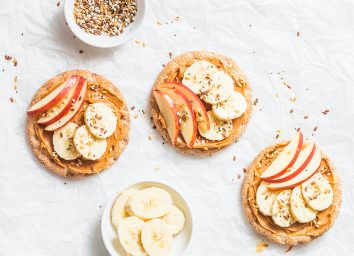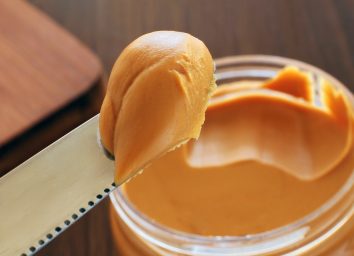The Unhealthiest Ways to Eat Peanut Butter, According to Dietitians
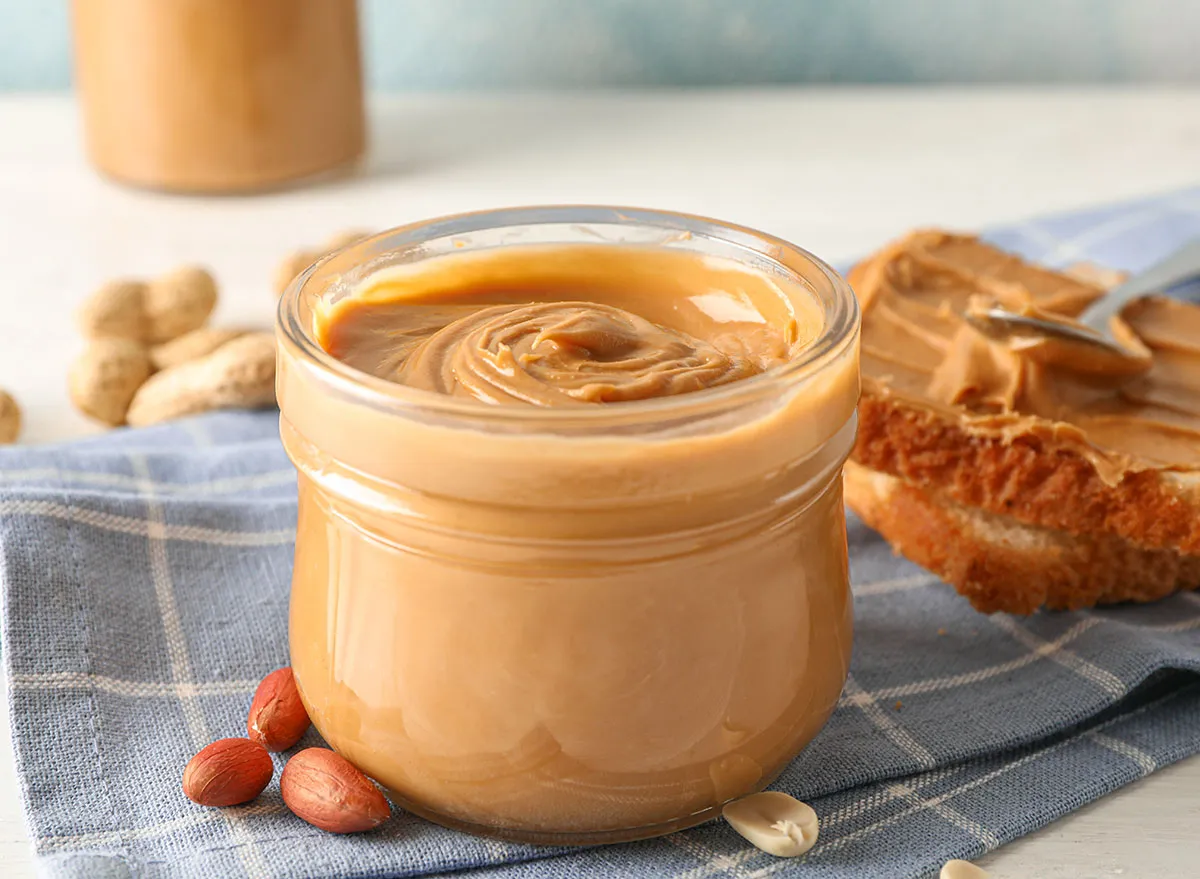
Peanut butter is one of the tastiest and most versatile spreads out there. It can go sweet or savory, and it can easily fill you up thanks to its protein punch. And on their own, peanuts are super healthy.
"Peanuts on their own are a highly nutritious food," says Roxana Ehsani, MS, RD, CSSD, LDN, registered dietitian nutritionist in Nevada. "Per 1 oz. of raw peanuts, peanuts provide 161 calories, 7 grams of protein, 14 grams of fat (fat coming from monounsaturated and polyunsaturated fats, which are two heart-healthy fats, aka good for you fats!), 4 grams of carbohydrates, and 2 grams of fiber." (Related: What Happens To Your Body If You Eat Peanut Butter Every Day.)
However, in peanut butter-form, things can go downhill nutritionally quickly. According to dietitians, there are three ways to eat peanut butter that are super unhealthy. Read on to find out what they are, and for more on how your favorite nutty spread, don't miss The Unhealthiest Peanut Butters on the Planet.
Low-Fat Peanut Butter
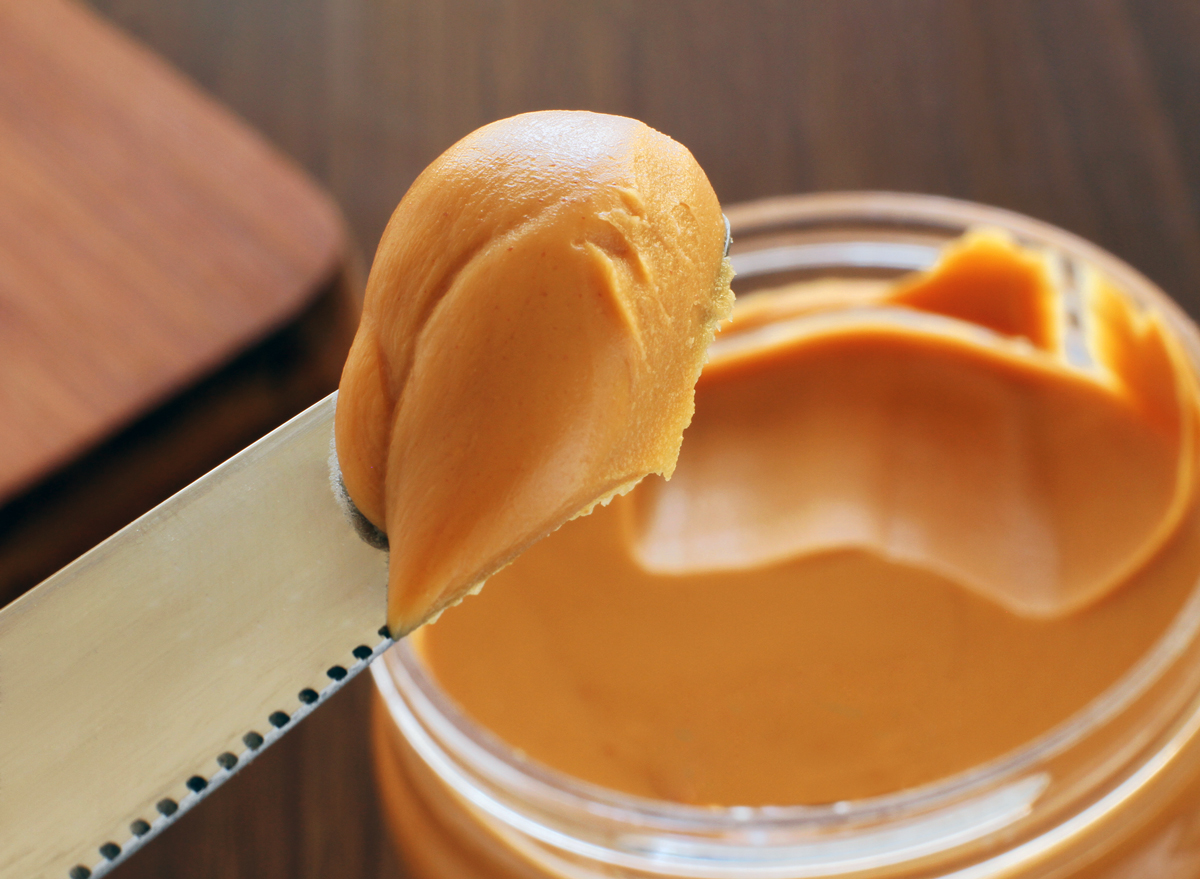
The specific type of peanut butter that is not a great choice is the low-fat type, and that's because the reduced fat content is replaced with added sugar. (That's why reduced fat PB is The #1 Worst Peanut Butter to Eat, According to a Dietitian.)
"The fat in natural peanut butter is mainly unsaturated fat, which is healthy for the heart," says Brenda Braslow, MS, RDN, LDN, CDCES, registered dietitian nutritionist for MyNetDiary. "Having unsaturated fat is better than reducing the fat and replacing it with added sugar. This is one way to follow the healthy eating guidelines to stay at less than 10% of your calories from added sugar."
Instead, you should stick with natural, full-fat peanut butter.
"I would choose natural peanut butter that is essentially ground peanuts and salt," says Braslow. "Be aware of the calories though! One tablespoon still has 95 calories, so spread it on sparingly."
Peanut Butter Desserts
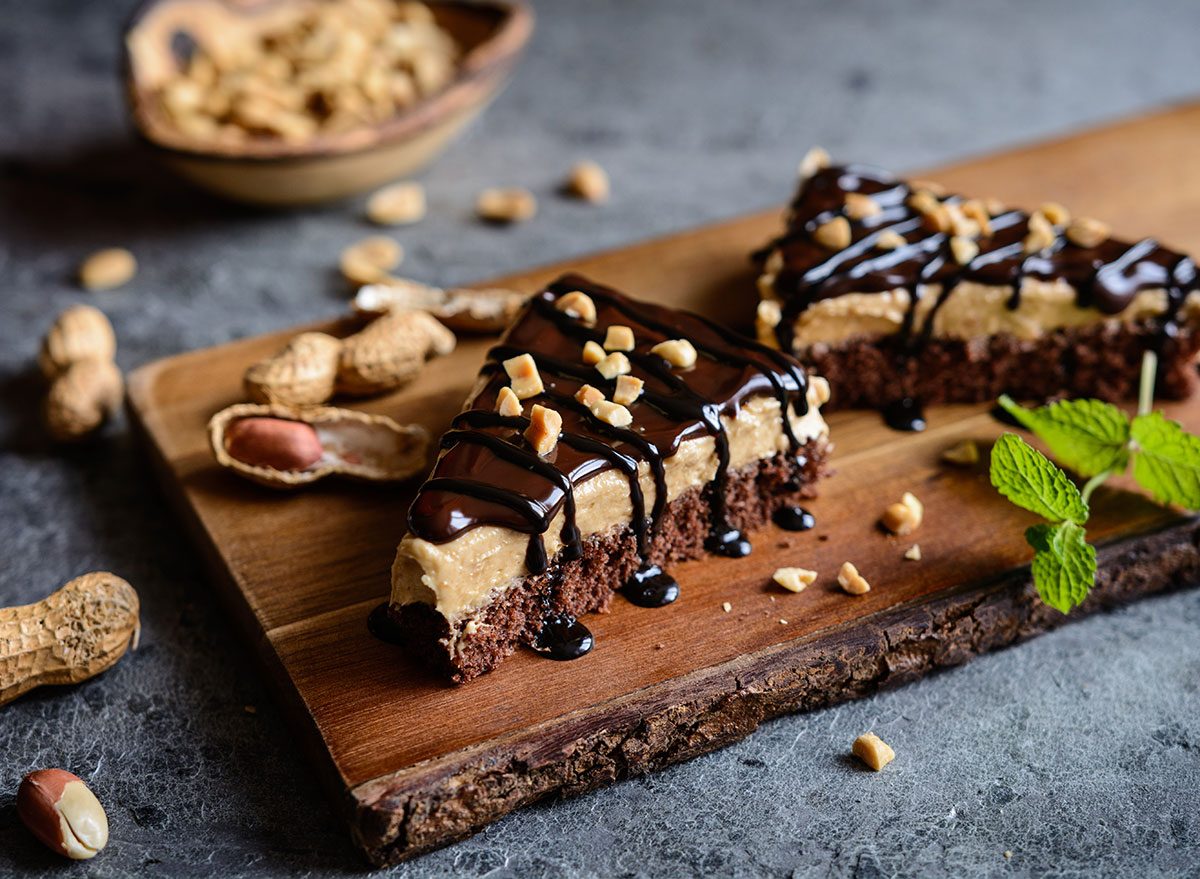
"I would say the most unhealthy way to eat peanut butter would be as a peanut butter dessert, such as peanut butter cream pie (360 calories, 24 grams fat, 33 grams carbohydrate per serving) or peanut butter chocolate cheesecake (500 calories, 29 grams fat, 56 grams carbohydrate, 36 grams sugar per serving)," says Braslow.
Peanut butter desserts are the unhealthiest way to eat peanut butter because peanut butter already has a large amount of fat, plus you are adding a lot of sugar to the fat when having it in dessert form.
So what could you eat instead?
"I like to enjoy natural peanut butter spread thinly on whole grain bread, topped with fruit, like sliced bananas or strawberries," says Braslow. "The fruit is much more nutritious than jelly, offering some extra vitamins, minerals, and fiber."
Flavored Peanut Butters (like Peanut Butter with Honey or Chocolate)
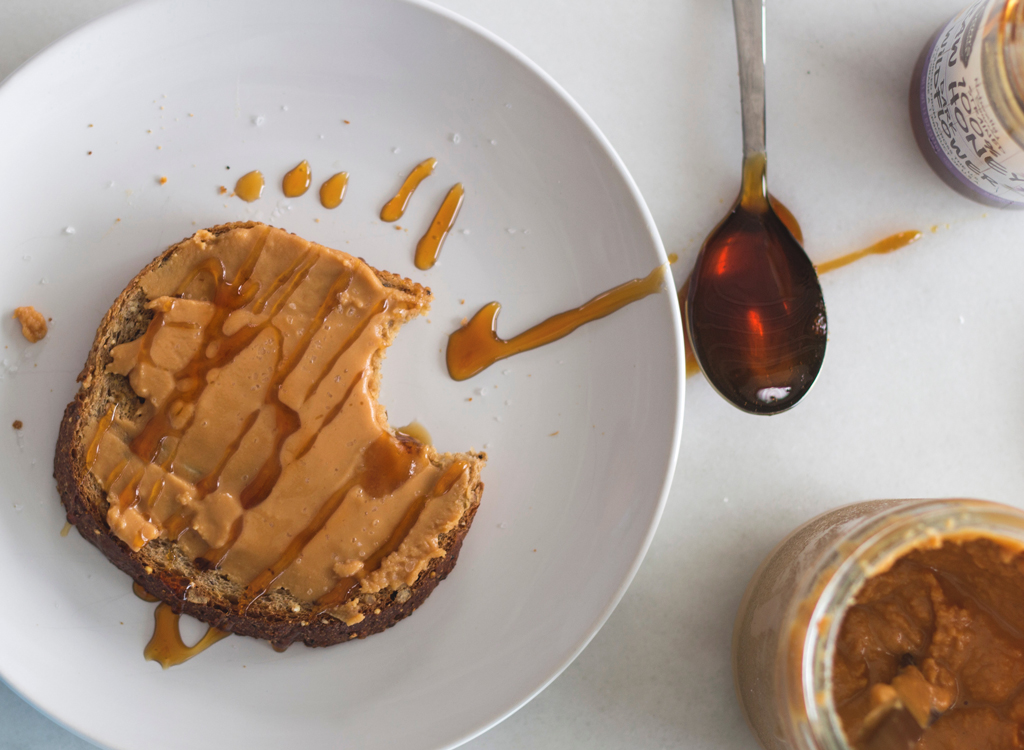
"There are so many peanut butter options on the shelf nowadays," says Ehsani. "However, when peanuts are processed into peanut butter AND manufacturers start adding not so healthy ingredients(like unhealthy oils, fats, sugar), it can turn the nutritious spread into something not so nutritious."
Unfortunately, many flavored peanut butters are often loaded with a few bad ingredients you should keep an eye out for.
"If the ingredients include partially or fully hydrogenated oil or fat, skip it!" says Ehsani. "Partially or fully hydrogenated oils and fats are trans-fats, which are fats that raise your bad cholesterol (LDL-cholesterol) and lower your good cholesterol (HDL-cholesterol), double whammy! It's best to skip any type of peanut butter that contains this type of fat as it will negatively impact your heart health! The reason manufacturers add this fat into the peanut butter is to keep it shelf-stable."
Other ingredients to avoid are sugar or corn syrup.
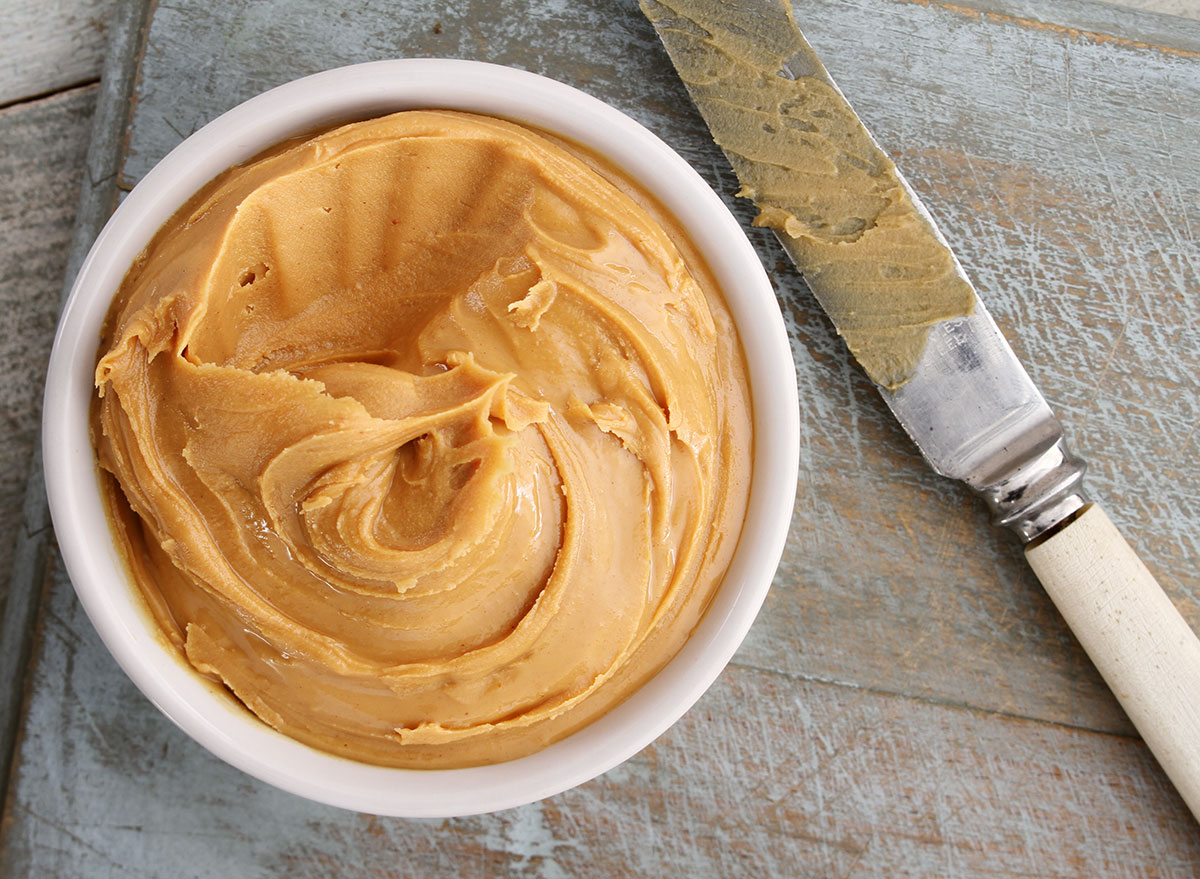
"Peanut butter on its own provides a delicious slightly sweet taste, why ruin the natural flavors of the peanuts, and add a sweetener to it?" says Ehsani. "It's best to limit your intake of added sugar products. The USDA's Dietary Guidelines recommends limiting calories from added sugar to no more than 10% each day, which equates to 200 calories or about 12 teaspoons for a 2,000-calorie diet."
And a 2014 study published in JAMA International Medicine, found a high sugar diet is linked to greater risk of dying from heart health.
According to Ehsani, make sure the peanut butter you are choosing says 100% peanuts on the label, and nothing else.
"Eat your peanut butter with oatmeal, a piece of fruit or on whole grain bread! Watch your portion size. The serving size for peanut butter is 2 tablespoons!" she says. To grab a healthy peanut butter, we did the work for you and put together this guide to The 20 Top Peanut Butters—Ranked!
